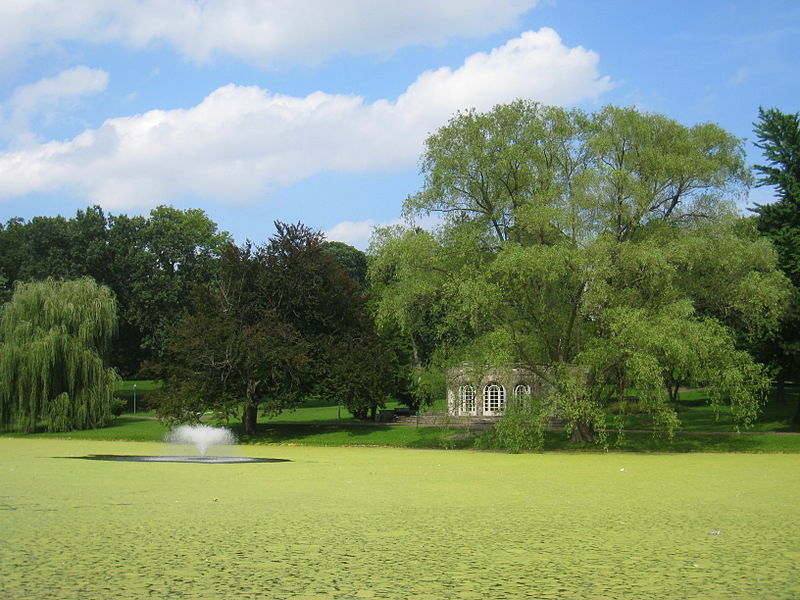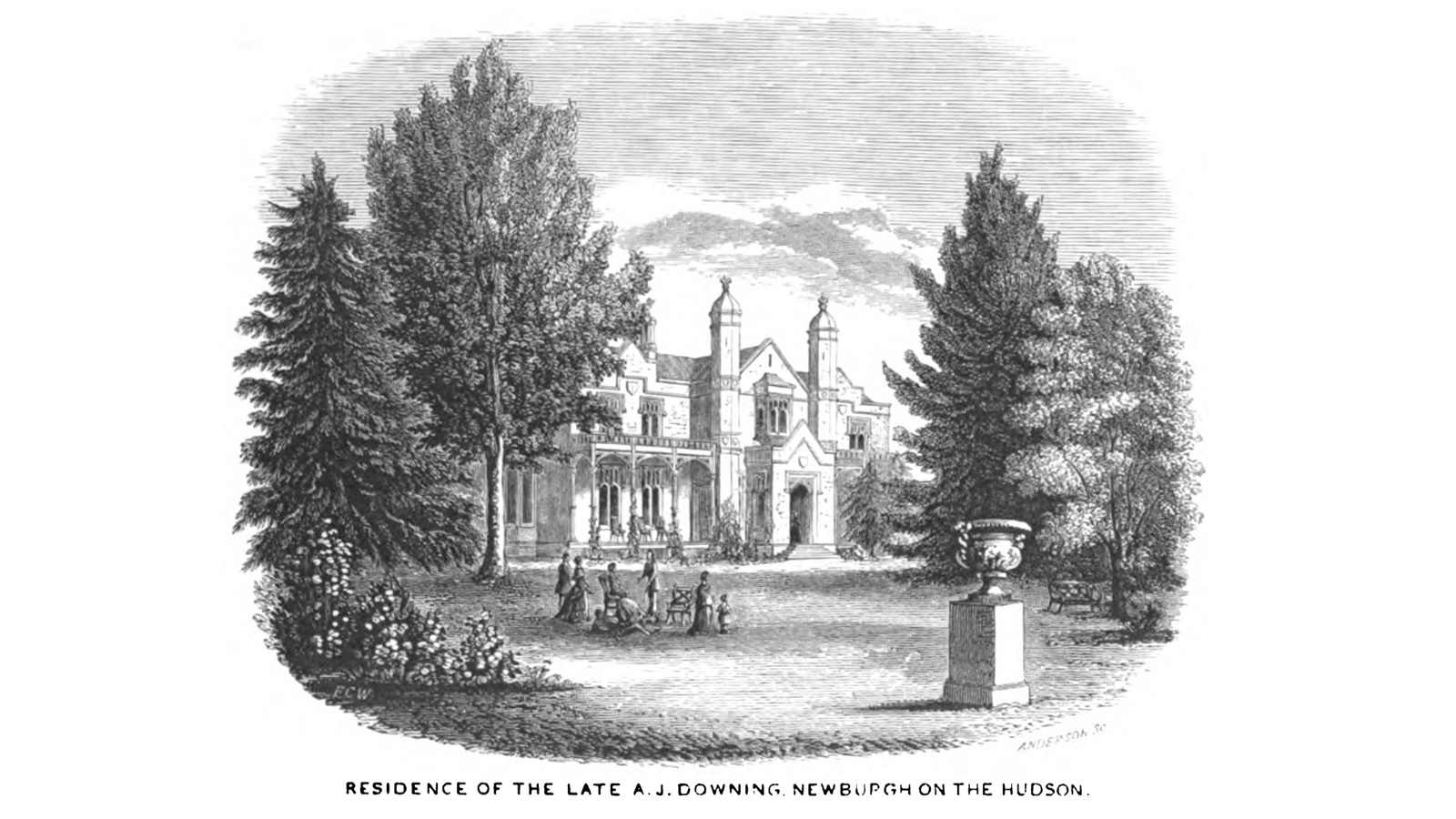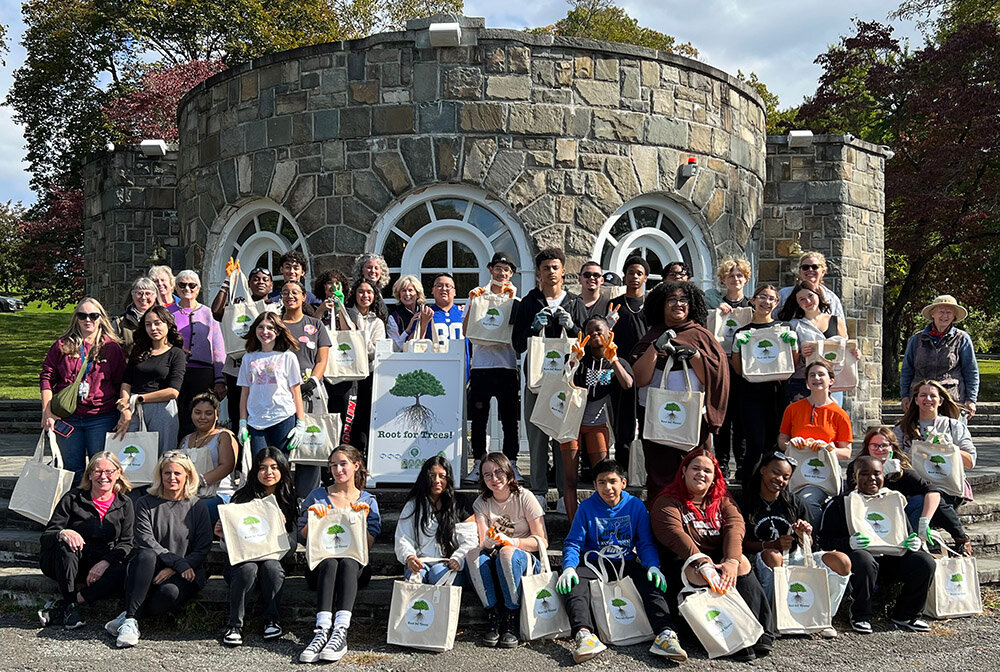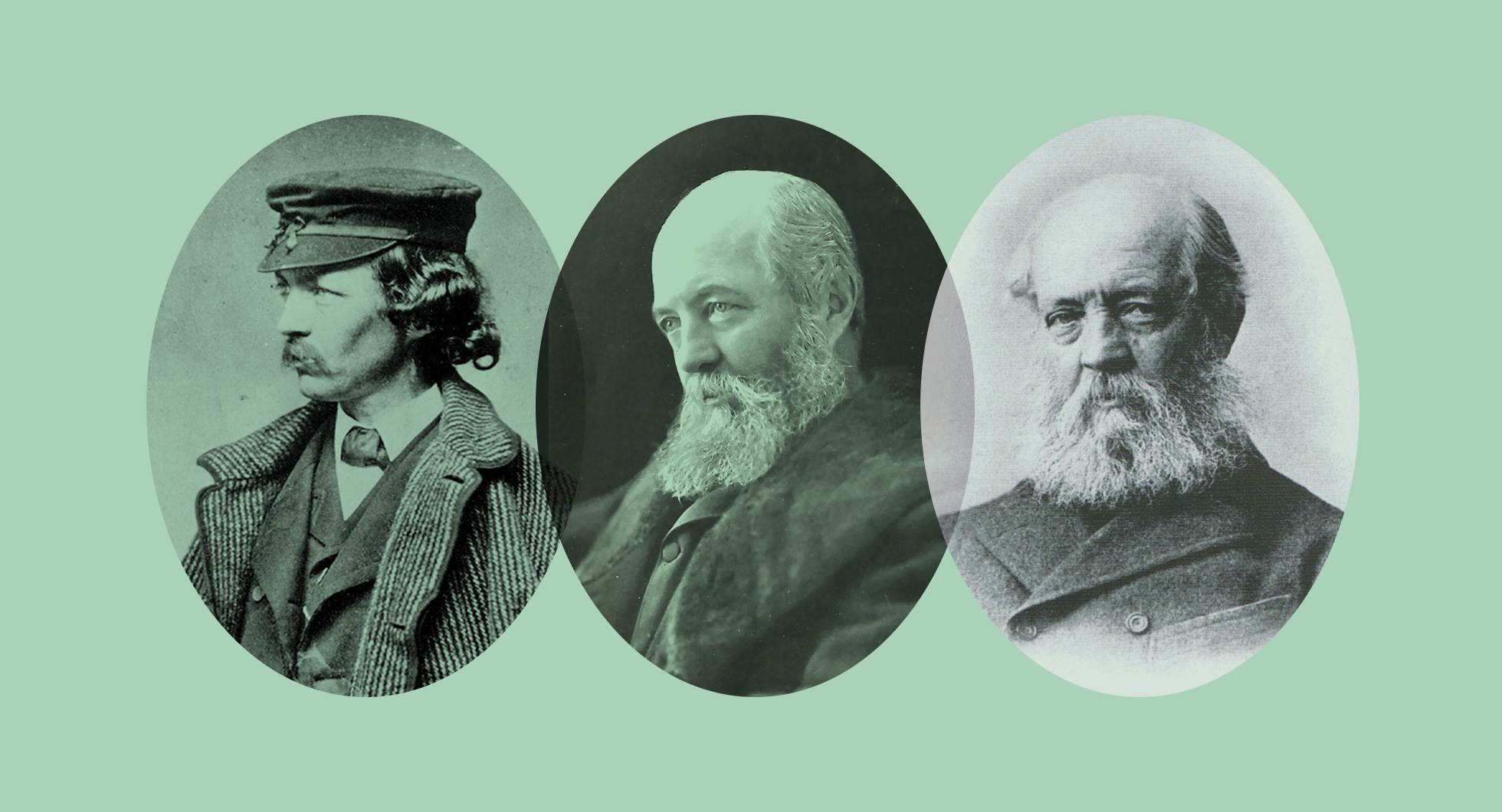
Downing Park was designed by Frederick Law Olmsted and Calvert Vaux as a memorial to Andrew Jackson Downing, their friend and mentor. Downing, at home in Newburgh, had influence far beyond— as a preeminent landscape gardener, horticulturist and author promoting the picturesque landscape and architectural taste. This was cut short by his tragic death in a Hudson River steamboat explosion. His partner, architect Calvert Vaux, then joined with Olmsted to create Central Park, the first of many civic and institutional landscapes. Their final collaboration on Downing Park, long after the partnership ended in the early 1870s, included contributions by Vaux’s son, Downing Vaux, and Olmsted’s stepson, John Charles Olmsted, in design and construction (1894-1897). Writing about Downing Park in “Belated Honor to a Prophet”, David Schuyler (1991) describes “an appropriate memorial to the man generally considered the father of public parks in the United States.”
Downing Park, which was created on former farmland, is now in the center of Newburgh. Its 34-acre park has many of the features found in more expansive Olmsted-Vaux parks, including sculpted topography, landscaped greenery, stately trees, expansive meadows, and a large pond for recreation and reflection. Scenic views of the Hudson River and Highlands were achieved from the highest point, once marked with an Observatory that was designed by Downing Vaux (demolished in the 1960s). The original park layout remains intact and later additions include a Pergola (1908), a pond-side Shelter House (1934), and an Amphitheater (1947), which replaced a bandstand.
Grand old trees stand as a tribute to Downing and speak of the Olmsted-Vaux legacy, but their need for arbor-care is evident from falling branches and tangled undergrowth. Newburgh, founded in 1709, served as General George Washington’s headquarters (1782-83) and became an important Hudson River port in the 19th Century. Today it is striving to revive the inner city and better serve its current diverse population. The renovation of Downing Park has the potential to be a key element in the environmental, economic, and social transformation of the city.
In May 2018, a tornado wreaked havoc throughout the city and damage to the park added to the toll of passing time. The need to immediately repair homes and businesses left Downing Park without funds to remove, replace or prune broken trees. The Garden Club of Orange and Dutchess Counties is working with the City of Newburgh, the Downing Park Planning Committee, and the Conservation Advisory Council to re-envision the life of the park. Encouraged by a Restoration Initiative grant from The Garden Club of America (GCA) with a goal to celebrate Olmsted during his 200th birthday year (2022), volunteers are gathering information from the original plans and from the Historic Preservation Master Plan (1990), developed by Heritage Landscapes, LLC. The GCA grant will focus on restoring the grounds around the Amphitheater where many community events are held. Revitalization of this area is aimed to attract community interest and seek funding partners who can assist with park-wide renovations. Historical plant lists are currently being assessed in consideration of changing climate and socio-economic conditions. Once maintained by 30 gardeners, this is now a wholly volunteer effort. The Garden Club of Orange and Dutchess Counties embraces the Olmsted 200 initiative and, as a longer-term goal, looks forward to returning this Downing-inspired picturesque landscape to the community.
This article first appeared in the October 1, 2021, issue of Field Notes by the National Association for Olmsted Parks.











